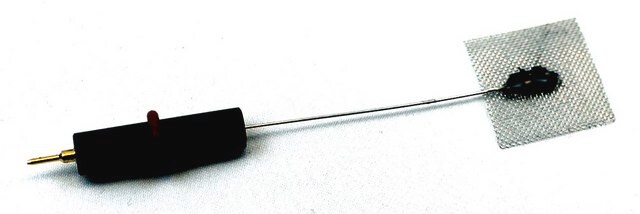349356
Platinum
foil, thickness 0.05 mm, 99.99% trace metals basis
Synonyme(s) :
Platinum black, Platinum element
About This Item
Produits recommandés
Niveau de qualité
Pureté
99.99% trace metals basis
Forme
foil
Résistivité
10.6 μΩ-cm, 20°C
Épaisseur
0.05 mm
Point d'ébullition
3827 °C (lit.)
Pf
1772 °C (lit.)
Densité
21.45 g/cm3 (lit.)
Chaîne SMILES
[Pt]
InChI
1S/Pt
Clé InChI
BASFCYQUMIYNBI-UHFFFAOYSA-N
Description générale
Application
- Platinum-group elements: This report covers the essential physical and chemical properties of platinum and its related metals, which are vital for applications ranging from automotive catalysts to anticancer drugs (Zientek et al., 2017).
- Platinum-based drugs for cancer therapy and anti-tumor strategies: This review discusses the development and clinical use of platinum-based chemotherapy agents, highlighting new platinum compounds and their mechanisms of action, crucial for drug discovery and medicinal chemistry (Zhang et al., 2022).
- Mastering the surface strain of platinum catalysts for efficient electrocatalysis: This article presents research on optimizing the surface properties of platinum for enhanced catalytic efficiency, which is significant for developing new catalytic materials in material science and energy applications (He et al., 2021).
Quantité
2.4 g = approximately 50 mm × 50 mm
Code de la classe de stockage
13 - Non Combustible Solids
Classe de danger pour l'eau (WGK)
nwg
Point d'éclair (°F)
Not applicable
Point d'éclair (°C)
Not applicable
Faites votre choix parmi les versions les plus récentes :
Déjà en possession de ce produit ?
Retrouvez la documentation relative aux produits que vous avez récemment achetés dans la Bibliothèque de documents.
Les clients ont également consulté
Articles
Can there be an effective strategy for finding breakthrough materials, since they are, by definition, unpredictable? One answer is found in Combinatorial Materials Science techniques, which represent a powerful approach to identifying new and unexpected materials.
Notre équipe de scientifiques dispose d'une expérience dans tous les secteurs de la recherche, notamment en sciences de la vie, science des matériaux, synthèse chimique, chromatographie, analyse et dans de nombreux autres domaines..
Contacter notre Service technique




